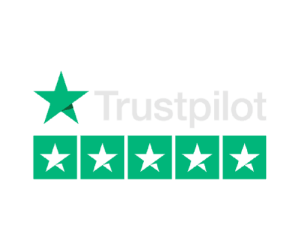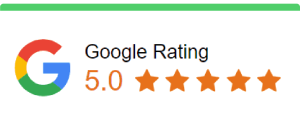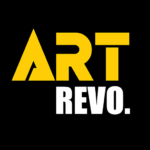The art market in 2025 is undergoing one of the most dynamic transformations in its history. While once dominated by physical spaces, auctions, and in-person exhibitions, the modern global art market now exists at the intersection of tradition and technology. Digital galleries, virtual exhibitions, NFT art, and online sales platforms are redefining how art is discovered, marketed, and sold.
This shift isn’t just changing how we sell art—it’s changing the very definition of what art is. From digital art platforms to social media marketing, from emerging marketplaces to global fairs like Art Basel, the future belongs to those who embrace digital marketing strategies tailored to the evolving art ecosystem.
At ArtRevo.net, we support this transformation by helping artists and galleries strengthen their digital presence through SEO, website optimization, and forward-thinking marketing strategies.
The Evolution of the Art Market in 2025
The art market 2025 is shaped by digital acceleration, remote access, and new consumer behaviors. According to the UBS Art Basel and UBS Global Art Market Report, online art sales reached over $10 billion in 2023 and continue to climb. The rise of digital art, e-commerce, and remote curating has made online discoverability essential.
Major market trends include:
-
Continued convergence of physical and digital sales models
-
Rise of digital art sales and NFT marketplaces
-
Increased importance of art platforms and curated online catalogs
-
Changing demographics of art collectors (younger, mobile-first, digital-native)
Galleries and artists not only need to adapt but also anticipate where the global market is heading next.
Why Digital Marketing Matters More Than Ever
In an era where every potential collector begins their search on a search engine or social feed, having a digital presence is no longer optional. It’s the backbone of visibility, branding, and financial sustainability.
Key reasons digital marketing is now indispensable:
-
It helps market your art to a global audience
-
Allows real-time engagement through social media marketing
-
Provides measurable data on market performance
-
Builds authority, reputation, and discoverability via SEO
-
Offers scalable ways to sell art online and build customer lists
Digital marketing helps your SEO, generates brand trust, and positions you competitively in the contemporary art market.
Digital Art and Online Sales: New Frontiers
Digital art is now a legitimate and increasingly lucrative art form. Artists are creating works entirely on tablets, using software like Procreate or Blender, and selling them directly through online platforms or as NFTs. These sales are often supported by digital marketing efforts that reach collectors across borders.
Meanwhile, traditional artists are also embracing online art sales—whether through Shopify galleries, online art platforms, or marketplaces like Saatchi Art.
Selling Digital Art Successfully Involves:
-
Hosting work on an optimized website
-
Sharing high-resolution, compressed images with image SEO best practices
-
Describing works using searchable titles, tags, and artist statements
-
Promoting work on platforms tailored to selling digital art
The digital transformation is not replacing traditional art—it’s expanding how it’s marketed, valued, and experienced.
How Galleries Are Adapting to Global Art Market Trends
Art galleries are pivoting toward hybrid models that blend physical exhibitions with immersive digital experiences. Many now invest in:
-
3D walkthroughs and virtual viewing rooms
-
Email campaigns and SEO-rich blog content
-
Digital art platforms for global reach
-
Stronger focus on website and marketing alignment
Some galleries excel in this transition, using analytics, A/B testing, and CRM systems to understand collector behavior. Others lag, struggling to apply modern marketing strategies in a historically conservative field.
To stay competitive, galleries must rethink:
-
How exhibitions are promoted
-
How collectors are engaged online
-
How the gallery website functions as a sales tool
ArtRevo helps galleries market their art using performance-based tools, SEO enhancements, and design optimization — all aligned with the demands of the global art market 2025.
Marketing Strategies for Digital and Traditional Art Forms
Whether you’re promoting digital artwork, fine art, or mixed media, your digital marketing strategy should include:
1. SEO Optimization
-
Target niche keywords like “original surrealist art online”
-
Include structured metadata for all artwork
-
Use optimized image files and alt text
2. Content Marketing
-
Share articles, interviews, and behind-the-scenes studio content
-
Improve website SEO by blogging on market trends, your process, or themes
3. Email Marketing
-
Create collector-specific drip campaigns
-
Segment by interest (e.g., “landscape collectors,” “NFT buyers”)
4. Paid Ads and Retargeting
-
Use Google Ads or Facebook retargeting to re-engage site visitors
-
Promote new exhibitions or limited editions
Whether you’re selling digital art, physical pieces, or both, success hinges on aligning messaging with search intent and building long-term audience trust.
The Role of Social Media and Online Art Platforms
No digital marketing strategy is complete without leveraging social platforms and curated art platforms.
Social Media Marketing Channels:
-
Instagram: Visual-first and still dominant in the art world
-
TikTok: Growing among emerging artists and younger buyers
-
LinkedIn: Ideal for connecting with curators and art professionals
-
Pinterest: Drives traffic through visual search
Platforms like Saatchi Art, Artfinder, and Artrevo.net help artists and galleries reach global art buyers, showcase portfolios, and integrate e-commerce functionality.
Tip: Use consistent branding, optimize captions with relevant hashtags, and share work-in-progress to boost engagement.
Selling Digital Art: Tools and Tactics
To sell digital art effectively in 2025, artists must:
-
Build a personal website with embedded e-commerce
-
Use platforms like Foundation, SuperRare, or OpenSea for NFT minting
-
Link social content to sales pages or drops
-
Share high-quality previews with optimized meta titles
Marketing your art digitally also means protecting digital files, maintaining authenticity, and providing clear licensing options — especially important for collectors entering the NFT art space.
The Rise of NFT Art and Its Market Impact
Although the NFT hype has leveled, NFT art continues to influence the art market structurally. It has normalized digital ownership and transformed how art in the digital space is valued.
NFT Art’s Contributions:
-
Built awareness for digital art as a collectible asset
-
Created new revenue streams for artists (royalties on resales)
-
Spurred new collaborations between tech and contemporary art
Still, NFTs require their own marketing strategies, including:
-
Explaining the value and utility of each piece
-
Educating buyers about ownership and wallets
-
Maintaining high visibility across crypto and art networks
Case Studies: Global Market Performance and Art Basel Insights
The Art Basel and UBS Global Art Market Report confirms what many already observe — that online channels are essential for sustaining growth in the global art market. Key findings include:
-
Online art sales make up nearly 20% of total global art sales
-
Digital art sales now account for a growing share of collector spending
-
Younger collectors prefer online bidding, viewing, and buying experiences
-
Marketing in 2025 relies on data, automation, and digital literacy
The report also highlights how art fairs like Art Basel are incorporating hybrid exhibitions, livestreams, and digital VIP rooms to stay relevant.
Looking Ahead: What 2025 and Beyond Hold for the Art World
As we move forward, the art market 2025 reflects an increasingly digitized, accessible, and global ecosystem. The most successful artists and galleries will be those who embrace digital marketing, data-driven decisions, and optimization of their online art presence.
Key Trends to Watch:
-
Increased use of AI in curating digital exhibitions
-
Voice and visual search integration in search engines
-
Expanded use of interactive digital art
-
Growing importance of SEO for art galleries and independent artists
FAQs About Digital Marketing in the Art Market
How is digital marketing changing the art market in 2025?
It’s expanding access to global collectors, accelerating online art sales, and making SEO, social media, and content strategy essential to success.
What are the top digital marketing tools for artists and galleries?
Google Analytics, Google Search Console, RankMath, email platforms (like Mailchimp), and social scheduling tools like Buffer or Later are among the most effective.
How can I market digital art or NFTs effectively?
Optimize your site for SEO, use crypto-specific platforms like Foundation or OpenSea, and promote drops with strategic social campaigns and collector outreach.
Is traditional art still relevant in a digital market?
Yes — but galleries and artists must use digital tools to remain competitive, attract traffic, and convert visits into sales.
What trends are influencing the global art market?
Hybrid exhibitions, younger collectors, digital authentication, and NFT art are driving new behaviors in the contemporary art market.
How can social media help sell artwork online?
It builds visibility, drives traffic, and encourages engagement. Platforms like Instagram and TikTok are central to promoting art online and connecting with art enthusiasts.
What is the role of SEO in promoting art websites?
SEO improves visibility in search engine results, helping your art appear when collectors search for terms like “buy digital art” or “emerging artists in 2025.”
Final Thoughts
From selling digital art to expanding gallery reach, the future of the art market is digital, global, and data-driven. Marketing in 2025 will not rely on a single platform or method—but on a comprehensive, creative, and optimized strategy.
Artists, galleries, and curators that invest in digital marketing, understand market trends, and embrace platforms like ArtRevo.net will thrive in this new era of visibility.
Let your art be more than seen—let it be found.



